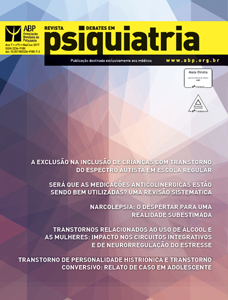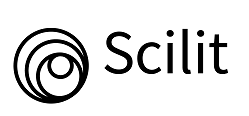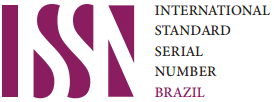Narcolepsy: awakening to an underestimated reality
DOI:
https://doi.org/10.25118/2236-918X-7-3-4Keywords:
Narcolepsy, cataplexy, hypersomnolence, hypocretin (orexin), hallucination, sleep paralysisAbstract
Narcolepsy is an underestimated disease that takes about 10 years to be diagnosed. The objective of the present study was to raise the awareness of physicians in general, and psychiatrists in particular, about the importance of considering narcolepsy in their patients in daily clinical practice. The negative impact of narcolepsy on quality of life is significant and comparable to that of epilepsy or schizophrenia. Diagnosis is characterized by the presence of five cardinal symptoms: excessive daytime sleepiness; cataplexy; sleep paralysis; hallucinations; and fragmentation of nocturnal sleep. The multiple sleep latency test is used after a baseline polysomnography to confirm diagnosis. Associated depression, bipolar and anxiety disorders are highly prevalent in patients with narcolepsy. Patients with narcolepsy are treated with stimulants and low doses of antidepressants. Interestingly, the abrupt withdrawal of antidepressants can cause a transient syndrome similar to cataplexy. Another common finding in patients with narcolepsy is REM sleep behavior disorder after the use of antidepressants. The use of psychostimulants, employed in narcolepsy for excessive daytime sleepiness control, can be accompanied by paranoid psychosis, similar to schizophrenia. The diagnosis, treatment, and management of narcolepsy associated with comorbidities are a challenge and should be given due consideration.
Downloads
Metrics
References
Thorpy MJ, Krieger AC. Delayed diagnosis of narcolepsy: characterization and impact. Sleep Med. 2014;15:502-7.
Thorpy MJ. Diagnosti c criteria and delay in diagnosis of narcolepsy. In: Goswami M, Thorpy MJ, Pandi-Perumal SR. Narcolepsy. a clinical guide. 2nd ed. Switzerland: Springer Internati onal Publishing; 2016. p. 45-9.
Hale L, Guan S, Emanuele E. Epidemiology of narcolepsy. In: Goswami M, Thorpy MJ, Pandi-Perumal SR. Narcolepsy: a clinical guide. 2nd ed. Switzerland: Springer Internati onal Publishing; 2016. p. 37-44.
Li SB, Jones JR, de Lecea L. Hypocreti ns, neural systems, physiology, and psychiatric disorders. Curr Psychiatry Rep. 2016;18:7.
Jacob L, Mignot E. Histoire de la narcolepsie de 1877 à 1980 émergence d’une nouvelle enti té Clinique. Hist Sci Med. 2016;50:69-74.
American Psychiatric Associati on. Diagnosti c and Stati sti cal Manual of Mental Disorders, Fift h Editi on (DSM-5). Arlington: American Psychiatric Publishing; 2013.
American Academy of Sleep Medicine. The internati onal classifi cati on of sleep disorders. 3rd ed. Chicago: American Academy of Sleep Medicine; 2014.
Cao MT, Guilleminault C. Narcolepsy: diagnosis and management. In: Kryger M, Roth T, Dement WC. Principles and practi ce of sleep medicine. 6th ed. Philadelphia: Elsevir; 2017. p. 873-82.
Scammell TE. Narcolepsy. N Engl J Med. 2015;373:2654-62.
Chow M, Cao M. The hypocreti n/orexin system in sleep disorders: preclinical insights and clinical progress. Nat Sci Sleep. 2016; 8:81-6.
Lopes DA, Coelho FM, Pradella-Hallinan M, de Araújo Melo MH, Tufi k S. Infancy narcolepsy: streptococcus infecti on as a causal factor. Sleep Sci. 2015;8:49-52.
Coleman PJ, Gott er AL, Herring WJ, Winrow CJ, Renger JJ. The discovery of suvorexant, the fi rst orexin receptor drug for insomnia. Annu Rev Pharmacol Toxicol. 2017;57:509-33.
Roh JH, Jiang H, Finn MB, Stewart FR, Mahan TE, Cirrito JR, et al. Potenti al role of orexin and sleep modulati on in the pathogenesis of Alzheimer’s disease. J Exp Med. 2014;211:2487-96.
Stores G. The protean manifestati ons of childhood narcolepsy and their misinterpretati on. Dev Med Child Neurol. 2006;48:307-10.
Peterson PC, Husain AM. Pediatric narcolepsy. Brain Dev. 2008;30:609-23.
Butt oo KSR, Pandi-Perumal SR, Guilleminault C. Narcolepsy and mental illness. In: Goswami M, Thorpy MJ, Pandi-Perumal SR. Narcolepsy: a clinical guide. 2nd ed. Switzerland: Springer Internati onal Publishing; 2016. p. 265-76.
Carter LP, Acebo C, Kim A. Pati ents’ journeys to a narcolepsy diagnosis: a physician survey and retrospecti ve chart review. Postgrad Med. 2014;126:216-24.
Bertolazi AN, Fagondes SC, Hoff LS, Pedro VD, Menna Barreto SS, Johns MW. Portugueselanguage version of the Epworth sleepiness scale: validati on for use in Brazil. J Bras Pneumol. 2009;35:877-83.
Frauscher B, Ehrmann L, Mitt erling T, Gabelia D, Gschliesser V, Brandauer E, et al. Delayed diagnosis, range of severity, and multi ple sleep comorbiditi es: a clinical and polysomnographic analysis of 100 pati ents of the Innsbruck narcolepsy cohort. J Clin Sleep Med. 2013;9:805-12.
Anic-Labat S, Guilleminault C, Kraemer HC, Meehan J, Arrigoni J, Mignot E. Validati on of a cataplexy questi onnaire in 983 sleep-disorders pati ents. Sleep. 1999;22:77-87.
Sharpless BA. A clinician’s guide to recurrent isolated sleep paralysis. Neuropsychiatr Dis Treat. 2016;12:1761-7.
D’Agosti no A, Limosani I. Hypnagogic hallucinati ons and sleep paralysis. In: Goswami M, Thorpy MJ, Pandi-Perumal SR. Narcolepsy: a clinical guide. 2nd ed. Switzerland: Springer Internati onal Publishing; 2016. p. 81-94.
Hobson JA, Pace-Schott EF, Sti ckgold R. Dreaming and the brain: toward a cogniti ve neuroscience of conscious states. In: Pace-Schott EF, Solms M, Blagrove M, Harnad S, editors. Sleep and dreaming: scienti fi c advances and reconsiderati ons. Cambridge: Cambridge University; 2003. p. 1-51.2. Thorpy MJ. Diagnosti c criteria and delay in diagnosis of narcolepsy. In: Goswami M, Thorpy MJ, Pandi-Perumal SR. Narcolepsy. a clinical guide. 2nd ed. Switzerland: Springer Internati onal Publishing; 2016. p. 45-9.
Coelho FMS, Moszczynski A, Narayansingh M, Parekh N, Pradella-Hallinan M. Sexual hypnagogic hallucinations and narcolepsy with cataplexy: a case report. Sleep Sci. 2011;4:110-2.
Sasai-Sakuma T, Kinoshita A, Inoue Y. Polysomnographic assessment of sleep comorbidities in drug-naïve narcolepsy-spectrum disorders -- a Japanese cross-sectional study. PLoS One. 2015;10:e0136988.
Mignot E, Lammers GJ, Ripley B, Okun M, Nevsimalova S, Overeem S, et al. The role of cerebrospinal fluid hypocretin measurement in the diagnosis of narcolepsy and other hypersomnias. Arch Neurol. 2002;59:1553-62.
Ohayon MM. Narcolepsy is complicated by high medical and psychiatric comorbidities: a comparison with the general population. Sleep Med. 2013;14:488-92.
Zamarian L, Högl B, Delazer M, Hingerl K, Gabelia D, Mitterling T, et al. Subjective deficits of attention, cognition and depression in patients with narcolepsy. Sleep Med. 2015;16:45-51.
Dauvilliers Y, Paquereau J, Bastaji H, Drouot X, Weil JS, Viot-Blanc V. Psychological health in central hypersomnias: the French Harmony study. J Neurol Neurosurg Psychiatry. 2009;80:636-41.
Vignatelli L, Plazzi G, Peschechera F, Delaj L, D’Alessandro R. A 5-year prospective cohort study on health-related quality of life in patients with narcolepsy. Sleep Med. 2011;12:19-23.
Ferguson AV, Samson WK. The orexin/hypocretin system: a critical regulator of neuroendocrine and autonomic function. Front Neuroendocrinol. 2003;24:141-50.
HeydendaelW, Sengupta A, Beck S, Bhatnagar S. Optogenetic examination identifies a contextspecific role for orexins/hypocretins in anxietyrelated behavior. Physiol Behav. 2014;130:182-90.
Johnson PL, Truitt W, Fitz SD, Minick PE, Dietrich A, Sanghani S, et al. A key role for orexin in panic anxiety. Nat Med. 2010;16:111-5.
Johnson PL, Molosh A, Fitz SD, Truitt WA, Shekhar A. Orexin, stress, and anxiety/panic states. Prog Brain Res. 2012;198:133-61.
Johnson PL, Federici LM, Fitz SD, Renger JJ, Shireman B, Winrow CJ, et al. Orexin 1 and 2 receptor involvement in co2-induced panicassociated behavior and autonomic responses. Depress Anxiety. 2015;32:671-83.
Nissen C, Feige B, Nofzinger E, Riemann D, Berger M, Voderholzer U. Transient narcolepsycataplexy syndrome after discontinuation of the antidepressant venlafaxine. J Sleep Res. 2005;14:207-8.
Phelps J. Tapering antidepressants: is 3 months slow enough? Med Hypotheses. 2011;77:1006-8.
Guilleminault C, Mignot E, Aldrich M, Quera- Salva MA, Tiberge M, Partinen M. Prazosin contraindicated in patients with narcolepsy. Lancet. 1988;2:511.
Schenck CH, Mahowald MW. Motor dyscontrol in narcolepsy: rapid-eye-movement (REM) sleep without atonia and REM sleep behavior disorder. Ann Neurol. 1992;32:3-10.
Iranzo A, Molinuevo JL, Santamaría J, Serradell M, Martí MJ, Valldeoriola F, et al. Rapid-eye movement sleep behavior disorder as an early marker for a neurodegenerative disorder: a descriptive study. Lancet Neurol. 2006;5:572-7.
Talih FR. Narcolepsy presenting as schizophrenia: a literature review and two case reports. Innov Clin Neurosci. 2011;8:30-4.
Szucs A, Janszky J, Holló A, Migléczi G, Halász P. Misleading hallucinations in unrecognized narcolepsy. Acta Psychiatr Scand. 2003;108:314-6; discussion 316-7.
Kishi Y, Konishi S, Koizumi S, Kudo Y, Kurosawa H, Kathol RG. Schizophrenia and narcolepsy: a review with a case report. Psychiatry Clin Neurosci. 2004;58:117-24.
Kondziella D, Arlien-Soborg P. Diagnostic and therapeutic challenges in narcolepsy-related psychosis. J Clin Psychiatry. 2006;67:1817-9.
Canellas F, Lin L, Julià MR, Clemente A, Vives-Bauza C, Ollila HM, et al. Dual cases of type-1 narcolepsy with schizophrenia and other psychotic disorders. J Clin Sleep Med. 2014;10:1011-8.
Debnath M, Cannon DM, Venkatasubramanian G. Variation in the major histocompatibility
Downloads
Published
How to Cite
Conference Proceedings Volume
Section
License

This work is licensed under a Creative Commons Attribution-NonCommercial 4.0 International License.
Debates em Psiquiatria allows the author (s) to keep their copyrights unrestricted. Allows the author (s) to retain their publication rights without restriction. Authors should ensure that the article is an original work without fabrication, fraud or plagiarism; does not infringe any copyright or right of ownership of any third party. Authors should also ensure that each one complies with the authorship requirements as recommended by the ICMJE and understand that if the article or part of it is flawed or fraudulent, each author shares responsibility.
Attribution-NonCommercial 4.0 International (CC BY-NC 4.0) - Debates em Psiquiatria is governed by the licencse CC-By-NC
You are free to:
- Share — copy and redistribute the material in any medium or format
- Adapt — remix, transform, and build upon the material
The licensor cannot revoke these freedoms as long as you follow the license terms. Under the following terms:
- Attribution — You must give appropriate credit, provide a link to the license, and indicate if changes were made. You may do so in any reasonable manner, but not in any way that suggests the licensor endorses you or your use.
- NonCommercial — You may not use the material for commercial purposes.
No additional restrictions — You may not apply legal terms or technological measures that legally restrict others from doing anything the license permits.






























